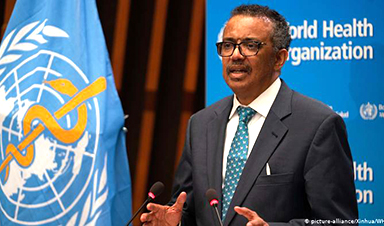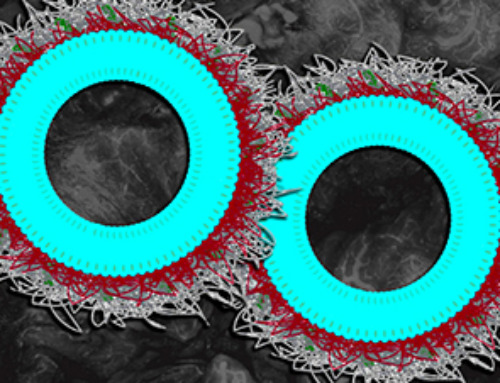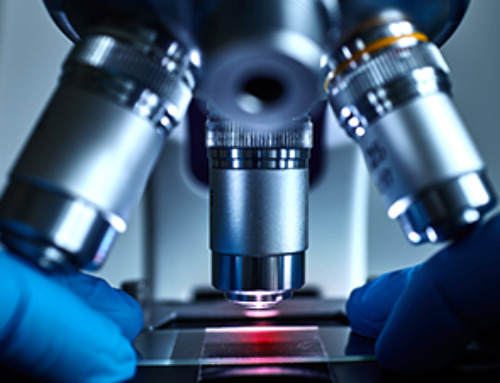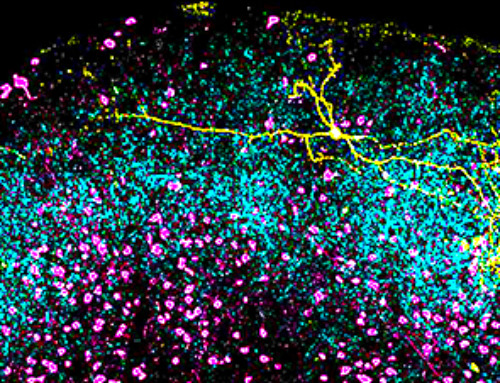Earlier this month, the World Health Organisation (WHO) acknowledged that the Coronavirus can also be airborne. After denying for more than a year, the WHO finally updated the mode of Covid-19 transmission and said that the disease can be an airborne threat. It said, “the virus can also spread in poorly ventilated and/or crowded indoor settings, where people tend to spend longer periods of time. This is because aerosols remain suspended in the air or travel farther than 1 metre (long-range)”. For almost a year now, scientists all over the world have known that the SARS-CoV-2 can be airborne for a short distance for some time, but the WHO had refused to acknowledge that.
It may be noted that Centers for Disease Control and Prevention (CDC) of the USA had also admitted earlier this month that the Covid-19 virus can be airborne, after denying the same for a year.
On March 28 2020, the WHO, the global health watchdog, took to social media to put out a post, “FACT: #COVID19 is NOT airborne”. In its post, the WHO claimed that the coronavirus is mainly transmitted through droplets generated when an infected person coughs, sneezes, or speaks. For the scientists of WHO, Covid-19 was not airborne, and one could not contract the disease if they followed necessary protocols.
Linsey Marr, an aerosol scientist at Virginia Tech and an infectious disease expert, had her doubts regarding WHO’s so-called fact-check. For Marr, who had analyzed the initial results of the Covid-19 outbreak in China, it looked like the virus may stay in the air for longer, infecting anyone who breathed in enough of it. For people indoors, that posed a considerable risk. Soon, Marr joined with 35 other aerosol scientists to try and warn the WHO it was making a big mistake.
According to a detailed report by website – The Wired, for the next few days, the scientists analyzed the list of superspreading events in restaurants, call centres, cruise ships, and a choir rehearsal, instances where people got infected to Covid-19 even when they were far away from a contagious person. The incidents contradicted the WHO’s main safety guidelines, i.e., keeping 3 to 6 feet of distance between people and frequent handwashing.
If SARS-CoV-2 travelled only in large droplets that immediately fell to the ground, as claimed by the WHO, then how would people far away from each other caught the infection, the scientists pondered. They argued that the infectious air was the reason for the infection. However, the WHO’s experts were in no mood to listen to these scientists. To declare Covid-19 could well be airborne, the scientists wanted more direct evidence, which could take months to gather. Meanwhile, thousands of people were falling ill every day as the virus was abundant in the air.
Lidia Morawska, a revered atmospheric physicist, also tried to explain how far infectious particles of different sizes can travel. Shockingly, WHO experts abruptly cut her off, arguing that she was wrong.
News
How a Palm-Sized Laser Could Change Medicine and Manufacturing
Researchers have developed an innovative and versatile system designed for a new generation of short-pulse lasers. Lasers that produce extremely short bursts of light are known for their remarkable precision, making them indispensable tools [...]
New nanoparticles stimulate the immune system to attack ovarian tumors
Cancer immunotherapy, which uses drugs that stimulate the body’s immune cells to attack tumors, is a promising approach to treating many types of cancer. However, it doesn’t work well for some tumors, including ovarian [...]
New Drug Kills Cancer 20,000x More Effectively With No Detectable Side Effects
By restructuring a common chemotherapy drug, scientists increased its potency by 20,000 times. In a significant step forward for cancer therapy, researchers at Northwestern University have redesigned the molecular structure of a well-known chemotherapy drug, greatly [...]
Lipid nanoparticles discovered that can deliver mRNA directly into heart muscle cells
Cardiovascular disease continues to be the leading cause of death worldwide. But advances in heart-failure therapeutics have stalled, largely due to the difficulty of delivering treatments at the cellular level. Now, a UC Berkeley-led [...]
The basic mechanisms of visual attention emerged over 500 million years ago, study suggests
The brain does not need its sophisticated cortex to interpret the visual world. A new study published in PLOS Biology demonstrates that a much older structure, the superior colliculus, contains the necessary circuitry to perform the [...]
AI Is Overheating. This New Technology Could Be the Fix
Engineers have developed a passive evaporative cooling membrane that dramatically improves heat removal for electronics and data centers Engineers at the University of California San Diego have created an innovative cooling system designed to greatly enhance [...]
New nanomedicine wipes out leukemia in animal study
In a promising advance for cancer treatment, Northwestern University scientists have re-engineered the molecular structure of a common chemotherapy drug, making it dramatically more soluble and effective and less toxic. In the new study, [...]
Mystery Solved: Scientists Find Cause for Unexplained, Deadly Diseases
A study reveals that a protein called RPA is essential for maintaining chromosome stability by stimulating telomerase. New findings from the University of Wisconsin-Madison suggest that problems with a key protein that helps preserve chromosome stability [...]
Nanotech Blocks Infection and Speed Up Chronic Wound Recovery
A new nanotech-based formulation using quercetin and omega-3 fatty acids shows promise in halting bacterial biofilms and boosting skin cell repair. Scientists have developed a nanotechnology-based treatment to fight bacterial biofilms in wound infections. The [...]
Researchers propose five key questions for effective adoption of AI in clinical practice
While Artificial Intelligence (AI) can be a powerful tool that physicians can use to help diagnose their patients and has great potential to improve accuracy, efficiency and patient safety, it has its drawbacks. It [...]
Advancements and clinical translation of intelligent nanodrugs for breast cancer treatment
A comprehensive review in "Biofunct. Mater." meticulously details the most recent advancements and clinical translation of intelligent nanodrugs for breast cancer treatment. This paper presents an exhaustive overview of subtype-specific nanostrategies, the clinical benefits [...]
It’s Not “All in Your Head”: Scientists Develop Revolutionary Blood Test for Chronic Fatigue Syndrome
A 96% accurate blood test for ME/CFS could transform diagnosis and pave the way for future long COVID detection. Researchers from the University of East Anglia and Oxford Biodynamics have created a highly accurate [...]
How Far Can the Body Go? Scientists Find the Ultimate Limit of Human Endurance
Even the most elite endurance athletes can’t outrun biology. A new study finds that humans hit a metabolic ceiling at about 2.5 times their resting energy burn. When ultra-runners take on races that last [...]
World’s Rivers “Overdosing” on Human Antibiotics, Study Finds
Researchers estimate that approximately 8,500 tons of antibiotics enter river systems each year after passing through the human body and wastewater treatment processes. Rivers spanning millions of kilometers across the globe are contaminated with [...]
Yale Scientists Solve a Century-Old Brain Wave Mystery
Yale scientists traced gamma brain waves to thalamus-cortex interactions. The discovery could reveal how brain rhythms shape perception and disease. For more than a century, scientists have observed rhythmic waves of synchronized neuronal activity [...]
Can introducing peanuts early prevent allergies? Real-world data confirms it helps
New evidence from a large U.S. primary care network shows that early peanut introduction, endorsed in 2015 and 2017 guidelines, was followed by a marked decline in clinician-diagnosed peanut and overall food allergies among [...]





















